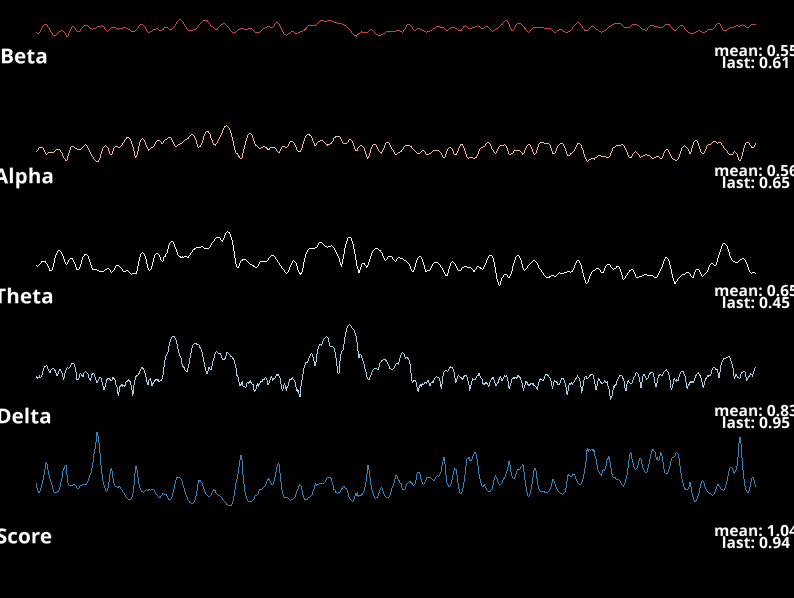Using an consumer-grade EEG device (Muse 2), and Sonic Pi, one can produce interesting sounds.
This repo deals with:
- (GUI) connecting the EEG device to a Windows or Ubuntu computer;
- (Python) transforming voltages coming from the EEG device to brain waves through FFT;
- (Python) computing brain activity metrics;
- (Python) sending OSC messages on localhost;
- (Python) creating vizualisations
- (Sonic Pi) receiving OSC messages and converting them to sounds.
Python 3.7 +
numpyvispy(advised to install via conda:conda install -c conda-forge vispy)- a backend for
vispy(recommended:pyqt, via conda) pylslpython-oscseaborn
Sonic Pi 3.1 +
Contributions and collaborations are welcome. For major changes, please open an issue first to discuss what you would like to change.
Thanks given to the amazing neuro and Sonic Pi communities.
Thanks to @hyruuk for help connecting the Muse to a laptop with eegsynth.
The core Python code was adapted from https://github.com/alexandrebarachant/muse-lsl/blob/master/examples/neurofeedback.py
- You should use
muse-windows.pyto send OSC. new-app.pyprovides visualisation but does not have a calibration time and does not send OSC messages yet.
Bramu is an art project derived from an installation done at the Montreal MusicMotion Hacklab 2019, whithin the FundamentalFrequencies team. The installation featured an EEG device (Muse 2), a haptic device (Subpac) and a visual shader that reacts to the participant's brain activity.
Real-time brain activity metrics were derived from the EEG signals using Python and sent in OSC format to the other parts of the installation (samely Sonic-Pi for the haptic and Unity for the shader).
